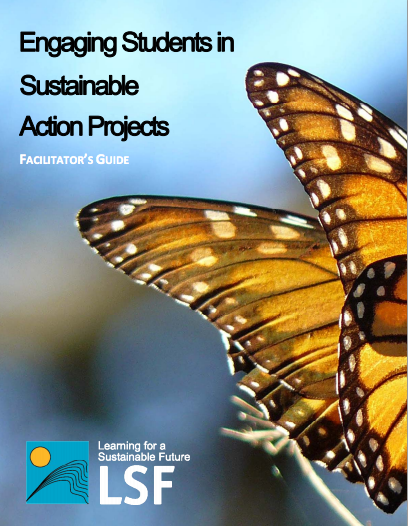- Home
- Tutorial
- Resource Guides
- Focus Areas
- LSF Programs
-
Professional
Development - Review Process
-
A project of LSF

Search for Resources
Connecting the Dots
Key Strategies that Transform Learning
for Environmental Education, Citizenship and Sustainability
Which learning strategies engage students as active citizens in supporting environmental, social, and economic sustainability?
Connecting the Dots answers the question: what are the learning strategies for environmental education that we can employ to prepare our young people to take their place as informed, engaged citizens? Throughout the process, a secondary line of inquiry emerged: how are these strategies aligned with 21st century learning skills including collaboration, creativity, communication and critical thinking?
We delved into the literature to find strategies that develop the concepts, real-world connections and learning skills that build engaged citizenship. The result is this guide, which shows ways of organizing learning experiences — in other words, the “how to” of learning.
We believe these strategies represent the best that environmental education has to offer to formal learning. They are the “dots” that connect to form a system approach to learning. Each learning strategy “dot” can:
- Link environmental, economic and social issues within subjects and across subjects
- Link students to each other, their home life, their schools and their community
- Link knowledge, skills and perspectives through student engagement and action
- Provide a meaningful context to address numeracy, literacy, character and other educational expectations.

The Seven Strategies
- Learning Locally
- Integrated Learning
- Acting on Learning
- Real-world Connections
- Considering Alternative Perspectives
- Inquiry
- Sharing Responsibility for Learning
Download the electronic version:
To purchase hard copies please contact: info@LSF-LST.ca
To purchase hard copies please contact: info@LSF-LST.ca
Written by Stan Kozak and Susan Elliot
Edited by David Israelson
Designed by Dino Roussetos
Copyright 2014
Engaging Students in Sustainable Action Projects (ESSAP) Guide
 The guide focuses on engaging the students in successful environment/social justice action projects. Specific strategies are developed to work toward creating change that is truly sustainable, not just for the Earth but also for students and for teachers themselves.
The guide focuses on engaging the students in successful environment/social justice action projects. Specific strategies are developed to work toward creating change that is truly sustainable, not just for the Earth but also for students and for teachers themselves.
Teachers are guided through what an action project entails and explore different strategies for success. Assistance with selecting and developing successful projects is provided. Teachers will have an opportunity to explore how action projects fit into curriculum units and various sample projects that can be carried out with their students.
Download the Engaging Students in Sustainable Action Projects (ESSAP) guide.

